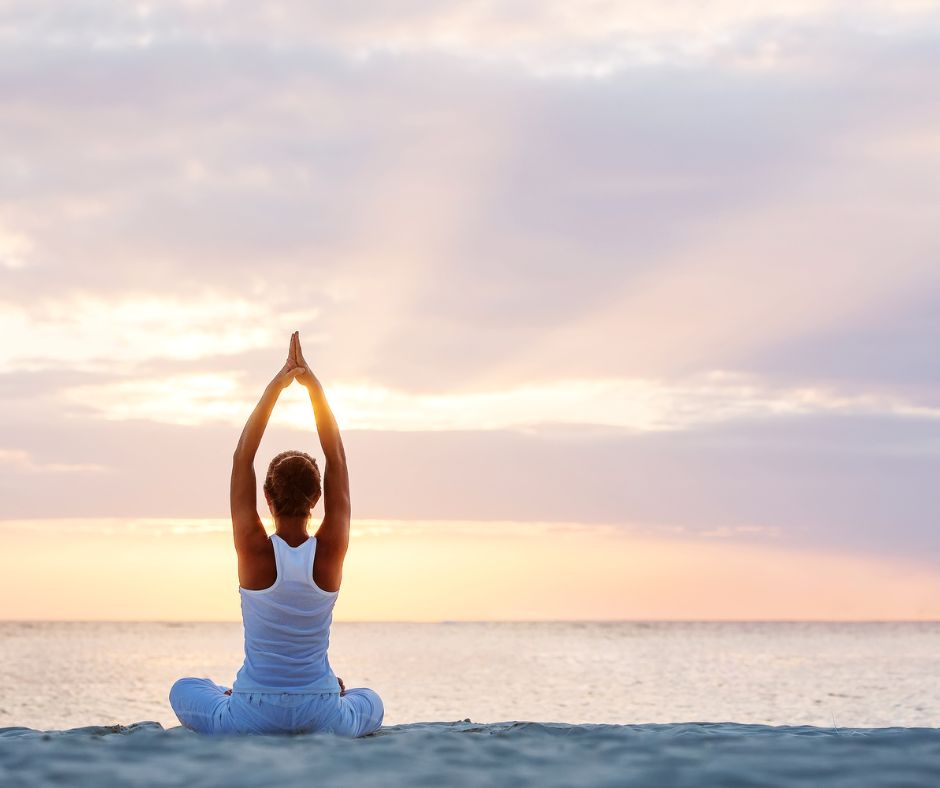Yoga combines movement sequences consisting of different poses, or asanas, with breathing and meditation techniques. As a wholistic approach, it has a positive effect on body and mind. A regular practice may also be beneficial for patients with arthritis. Nevertheless, there are certain precautions and considerations to be on the safe side.
With a tradition of at least 5,000 years, yoga means “union of body and mind”1. Undoubtedly, it is an excellent way to promote and maintain physical and mental health for people without any major ailments or physical limitations. Health benefits that are considered with a regular practice are:
- Strengthening and stretching of muscles and ligaments,
- Regulating blood pressure,
- Stress relief and increased levels of energy,
- Improved mental balance,
- Supporting the nervous system,
- Positive influence on the organs,
- Enhancing hormonal balance,
- Better sleep.
Another advantage of yoga: There is no age limit and it can be done everywhere and everytime. However, as a beginner you should be guided by an experienced teacher to learn the basics and about the effects of the different poses. Some exercises, for example the shoulder stand, plow or headstand, can lead to injuries if you are too ambitious or suffering from certain medical conditions. Thus, when practicing yoga, it is important to know about your limits. A good yoga teacher will guide you during your practice and show you how you do the poses correctly. And there are always alternatives to poses, that are too demanding or simply not good for you.
Is yoga beneficial for patients with arthritis?
Due to the mentioned risks, concerns remain that yoga may not be suitable for people with vulnerable joints. On the other hand, a large clinical trial conducted by the Johns Hopkins Arthritis Center2 shows that for patients with rheumatoid arthritis and osteoarthritis, yoga appears to be safe, possible to do, and enjoyable. According to the study, it has the potential to increase physical and mental health when practiced regularly. Moreover, almost all benefits resulting from an eight-week program like walking speed and physical function were still evident nine months later. Improvements in perceived stress, and pain were also noted. The same yoga program was used in a follow up study which shows improvements in balance, functional reach, upper body function, and pain.
In order to adjust the yoga practice for the patients, poses that were part of the program were mainly gentle forward bends, backbends, twists, balances, standing, sitting and lying poses. In addition, the asanas were modified according to the medical condition of each individual participant.
Potential to reduce pain and overall impact on the patients’ life
As arthritis still can’t be cured, yoga may provide important additional physical and psychological health benefits, when combined with a program of medical care. It may reduce pain, disability, and may help to manage the overall impact of arthritis.
For patients with arthritis, it is even more important to take precautions when starting yoga. First of all, you should talk to your doctor, rheumatologist or orthopedist to find out if there should be any limitations or restrictions or any movements and poses you should not do. In addition, it is equally important to evaluate if any other medical condition or medications would limit participation, such as high blood pressure, lung conditions, or heart disease.
How to find “your” yoga
The best introduction to yoga is always with a qualified yoga teacher or therapist. There are many different yoga styles. Some are softer, like Hatha or Yin Yoga. Others are physically more or very demanding like Vinyasa Flow, Ashtanga or Power Yoga.
If you are interested in group classes, a beginner, “gentle” or even a therapeutic class will be appropriate. Make sure that the class is led by a qualified teacher who can guide you in safe and healthy poses, which are appropriate for your medical condition and limitations. Before class, you should always discuss your health issues and specific concerns with your instructor. Another option would be individual classes with a yoga therapist to design an individual program for you.
* The content of this article expresses editorial opinion only, it is not meant to provide medical advice, fact, or to provide medical recommendations on how to treat disease. Always direct medical questions to a licensed healthcare professional. You should always see a doctor for a medical check-up before starting any new fitness program, particularly if you are aged over 40 years, are overweight or haven’t exercised in a long time.
References:
[1] Olivia H. Miller, The Yoga Deck, 50 Poses and Meditations for Body, Mind and Spirit [2] The following information on the study refer to: Steffany Moonaz, PhD RYT500, Susan J. Bartlett, PhD, and Clifton O. Bingham III, MD: Yoga for Arthritis:https://www.hopkinsarthritis.org/patient-corner/disease-management/yoga-for-arthritis/

